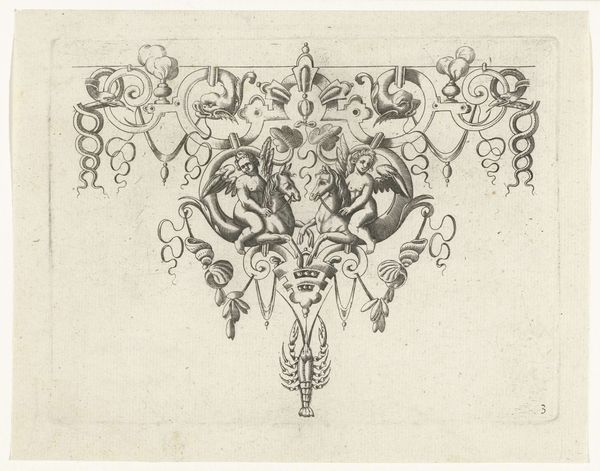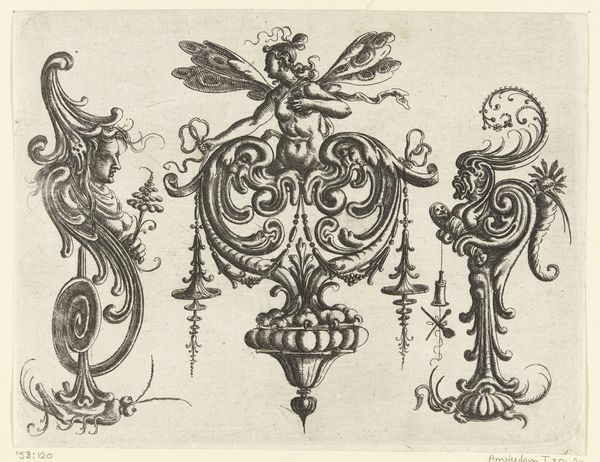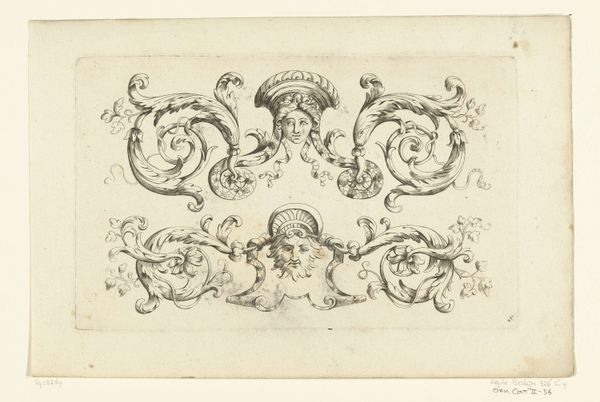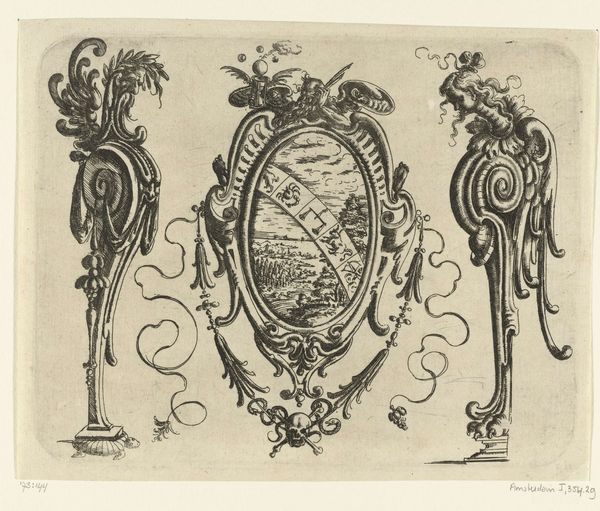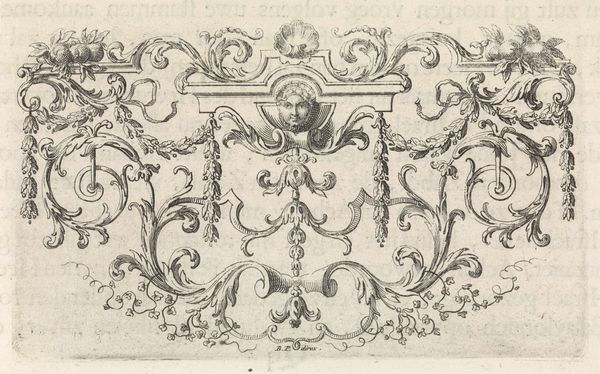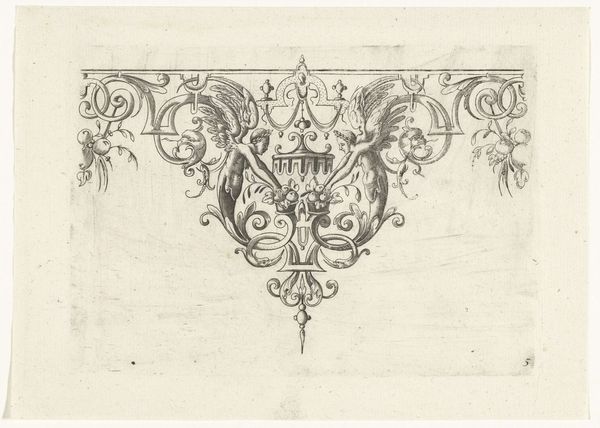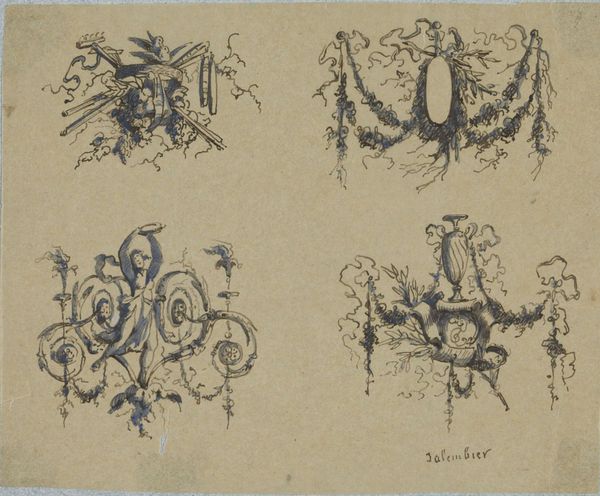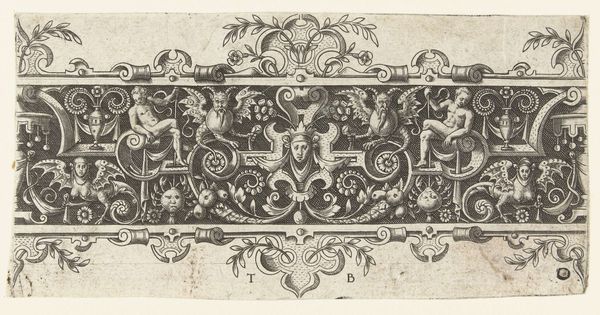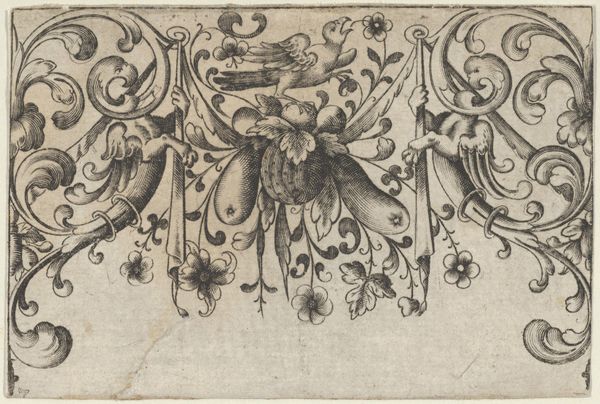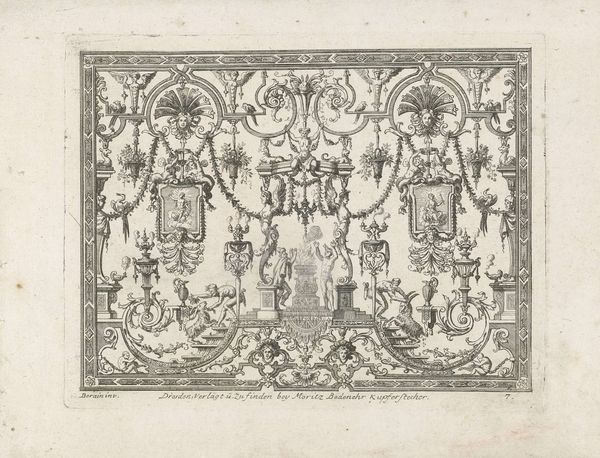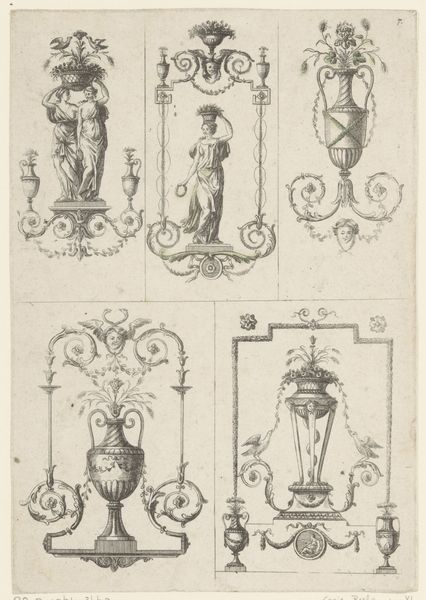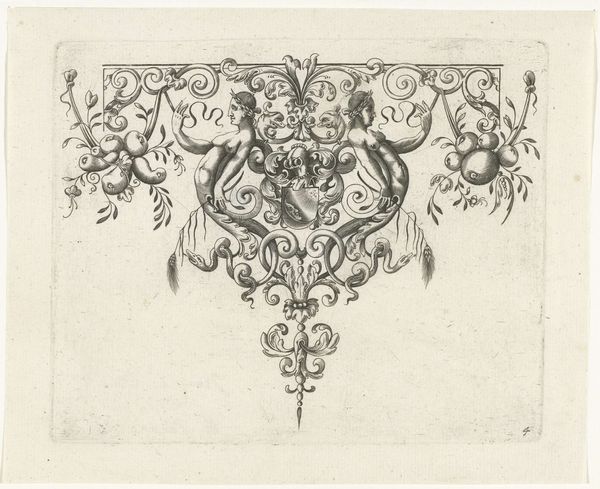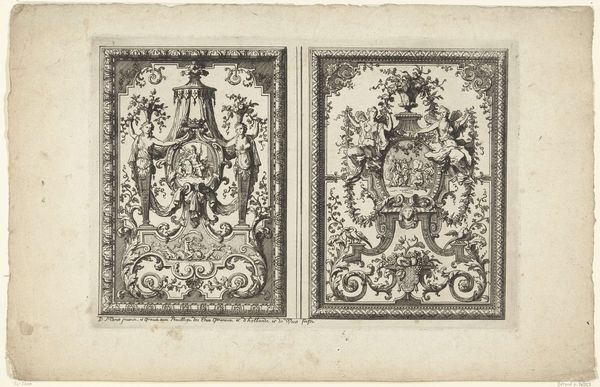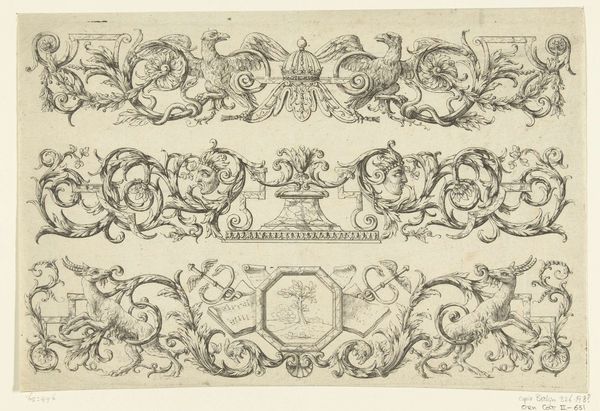
print, engraving
#
allegory
# print
#
pen sketch
#
mannerism
#
figuration
#
decorative-art
#
engraving
Dimensions: height 110 mm, width 187 mm
Copyright: Rijks Museum: Open Domain
Curator: Oh my, this is a quirky little thing, isn't it? Like a baroque fever dream distilled into monochrome. What do you make of it? Editor: It's unsettling, actually. "Oirband met een sater," they call it – an Ornament with a Satyr. It dates back to somewhere between 1516 and 1556. What we're looking at here is a print, an engraving to be precise. You can find it over in Gallery 212 at the Rijksmuseum. The artist... well, that remains a mystery, simply listed as Anonymous. Curator: Anonymous. How fitting. This work whispers to me of hidden identities and artistic humility. See the Mannerist flair? So much crammed into one small space. The satyr isn't exactly joyful, is it? Editor: The Mannerist style, with its exaggerated forms, absolutely speaks to the anxieties of the period. And, you're right, the satyr figure isn’t jovial in the slightest. Looking closer, it almost feels as if this piece showcases power dynamics of the time—the ornament practically suffocates the central figure! Curator: Power play, indeed! The wild abandon feels utterly contrived. It is supposed to symbolize freedom or licentiousness, and I don’t buy it. The detail, the fineness of the engraving... I wonder what space it was originally designed to occupy? A book, perhaps? Or as a model for a larger architectural feature? Editor: Most likely. Prints like these often served as design templates, spreading artistic ideas far and wide. Given the era and the subject, the prints circulated among wealthy patrons and their workshops. But consider the political backdrop. Religious upheaval, societal anxieties… art became a battleground for meaning. A grotesque head— almost like a warning. Curator: It gives me chills, even with the distance of centuries. Does this piece resonate as something inherently evil? Or does it represent suppressed societal forces trying to break through the surface? Editor: It reflects the ongoing battle between reason and desire that was shaking the foundations of Renaissance society, I'd say. Curator: Well, it's certainly left an impression. Anonymous indeed...a perfect embodiment of the unknown forces churning beneath the surface of polite society. Editor: Absolutely. It's a potent reminder that even seemingly decorative art can be a charged and complex reflection of its time.
Comments
No comments
Be the first to comment and join the conversation on the ultimate creative platform.
